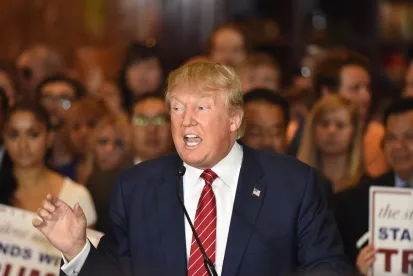On February 24, 2017, US President Donald Trump issued an executive order on regulatory reform, directing federal agencies to take steps to strengthen their implementation of various executive orders from the Trump, Obama, and Clinton administrations intended to reduce the burden of federal regulations on business.
Under the new Executive Order on Enforcing the Regulatory Reform Agenda, each agency is directed to appoint a Regulatory Reform Officer to chair a Regulatory Reform Task Force to implement the executive order at the agency. The task force is charged with identifying those regulations that reduce employment; are “outdated, unnecessary, or ineffective”; have costs exceeding their benefits; interfere with regulatory reform efforts; rely on information that is not transparent or publicly available; or implement rescinded or substantially modified prior executive directives. Once those regulations are identified, an agency’s Regulatory Reform Task Force will recommend whether the regulations should be repealed, replaced, or modified. The new executive order also directs that agencies prioritize those regulations flagged as “outdated, unnecessary, or ineffective” when implementing the regulatory offsets required by an earlier White House directive (Executive Order 13771), which, among other things, directed agencies to repeal two existing regulations for each new regulation.
The new executive order does not state whether it covers independent agencies such as the Federal Energy Regulatory Commission (FERC), but refers only to “agencies” generically. However, it does provide several accountability measures and directs the Office of Management and Budget (OMB) to issue guidance on how those agencies that are not required to submit annual performance plans “should be held accountable for compliance with this order.” The forthcoming OMB guidance may more explicitly outline the manner in which FERC is expected to comply with the executive order.
In any case, even if FERC is not legally bound by the language of the executive order, it has in the past typically complied with such executive orders voluntarily and is therefore likely to comply with this new order to some degree. For example, after President Barack Obama issued Executive Order 13579, directing (but not requiring) independent agencies to conduct retrospective reviews of their regulations to identify rules that could be modified or repealed on the grounds that they are excessively burdensome, outmoded, or ineffective, FERC adopted a plan for a retrospective analysis of its own regulations and has continued to perform reviews of its regulations on an ongoing basis. More recently, FERC complied with President Trump’s Regulatory Freeze Memorandum, issued immediately following the inauguration, even though FERC did not admit that the memorandum necessarily applied to the commission.
Given FERC’s status as an independent agency, the White House has little direct control over the agenda FERC may adopt, including its implementation of the directives in the new executive order. However, President Trump has the opportunity to appoint the majority of the FERC commissioners, and once those commissioners are in place, FERC’s efforts and willingness to comply with this executive order will likely increase significantly. The timing of these appointments is still uncertain—as of yet, the president has not officially announced any FERC appointments for Senate consideration.


 />i
/>i
